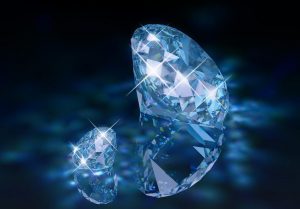Gem stones are mainly inorganic solids obtained from the Earth. They belong largely to the mineral kingdom and have been formed by inorganic processes i.e. without the agency of organisms. This may be the reason why, in gemology or the gem trade, the term stone is colloquially used for any gem material whether organic or inorganic, natural or man-made.
Mineral
An inorganic, homogeneous substance, formed in the Earth’s crust, with a characteristic chemical composition and physical and optical properties which are constant within narrow limits. Example: emerald, ruby, diamond etc.
Rock
An aggregate of two or more minerals. It may consist of a single component like marble (calcite), or may contain more than one mineral. Lapis lazuli is a rock which is made up of lazurite with (sometimes) calcite and / or pyrite.
Structure of the Earth
The earth is a sphere made up of concentric layers. The outermost layer is a thin shell (10 – 35 km thick) called the crust. It is made up solid rocks. The innermost part is a sphere with a radius of 3480 km called the core. It is made up of metallic iron and nickel. The inner core (radius 1220 km) is solid, while the outer core is molten. Between the crust and the core there is a very thick layer (about 2890 km thick) called the mantle. It consists of semi-solid silicate matter which undergoes slow convection. When the temperature locally increases, a part of the outermost layer of the mantle gets melted to produce magma which then penetrates the crust to solidify as igneous rocks.



























Leave a Reply
You must be logged in to post a comment.